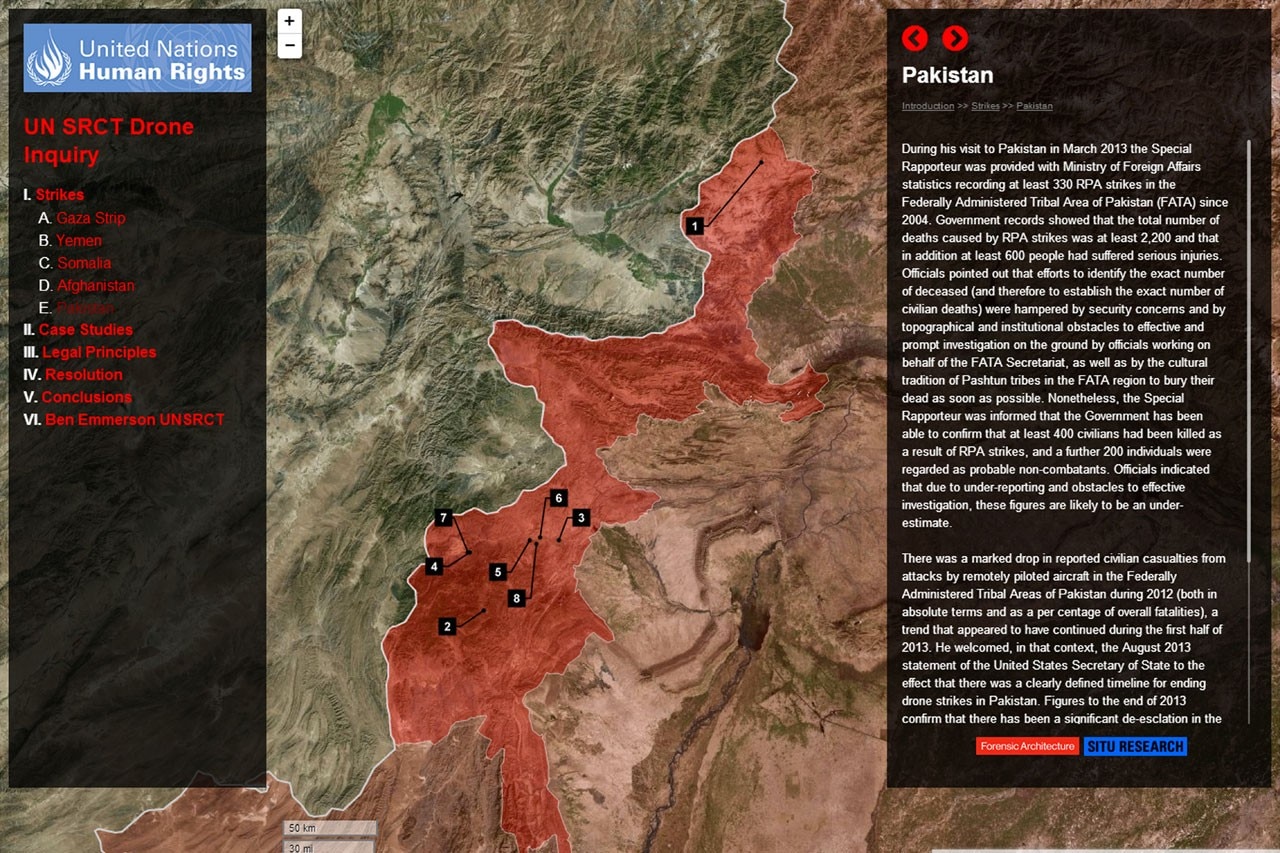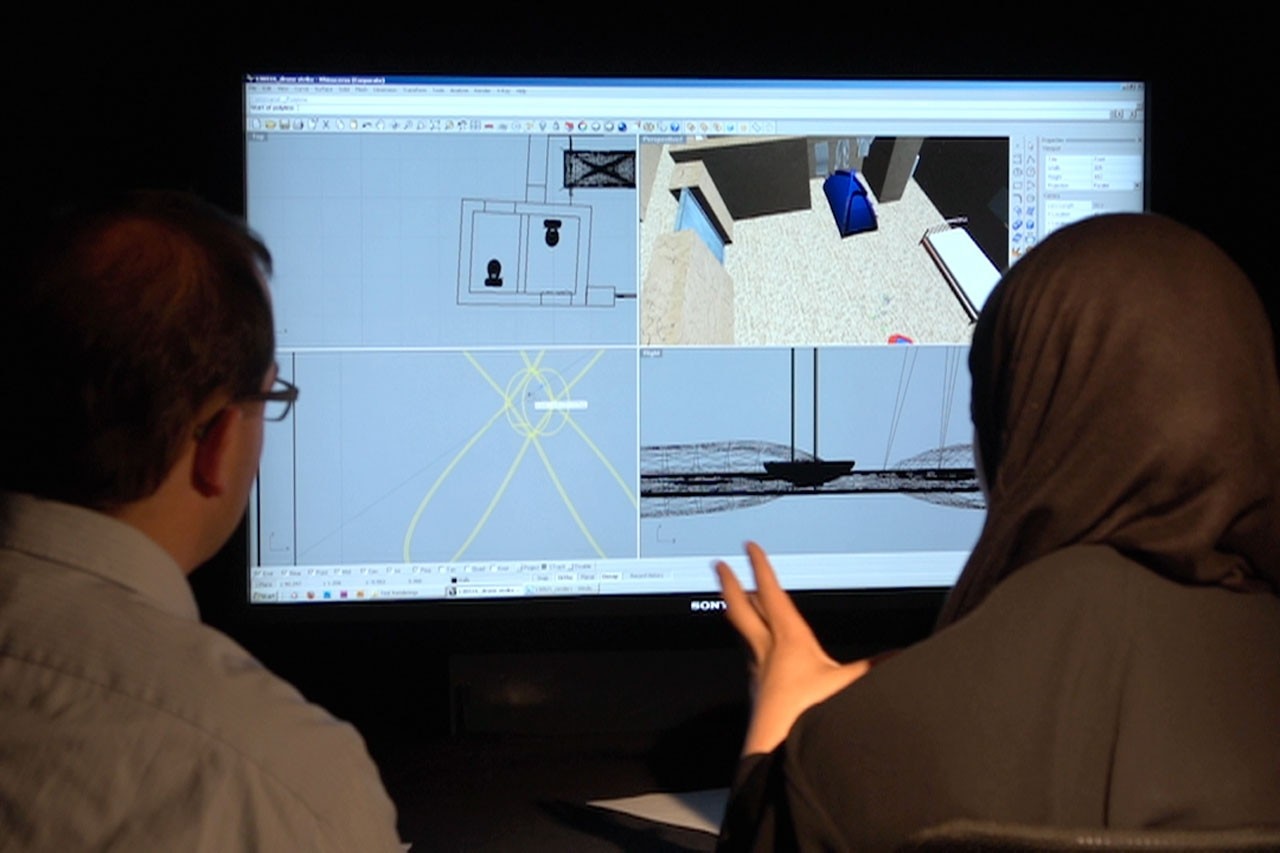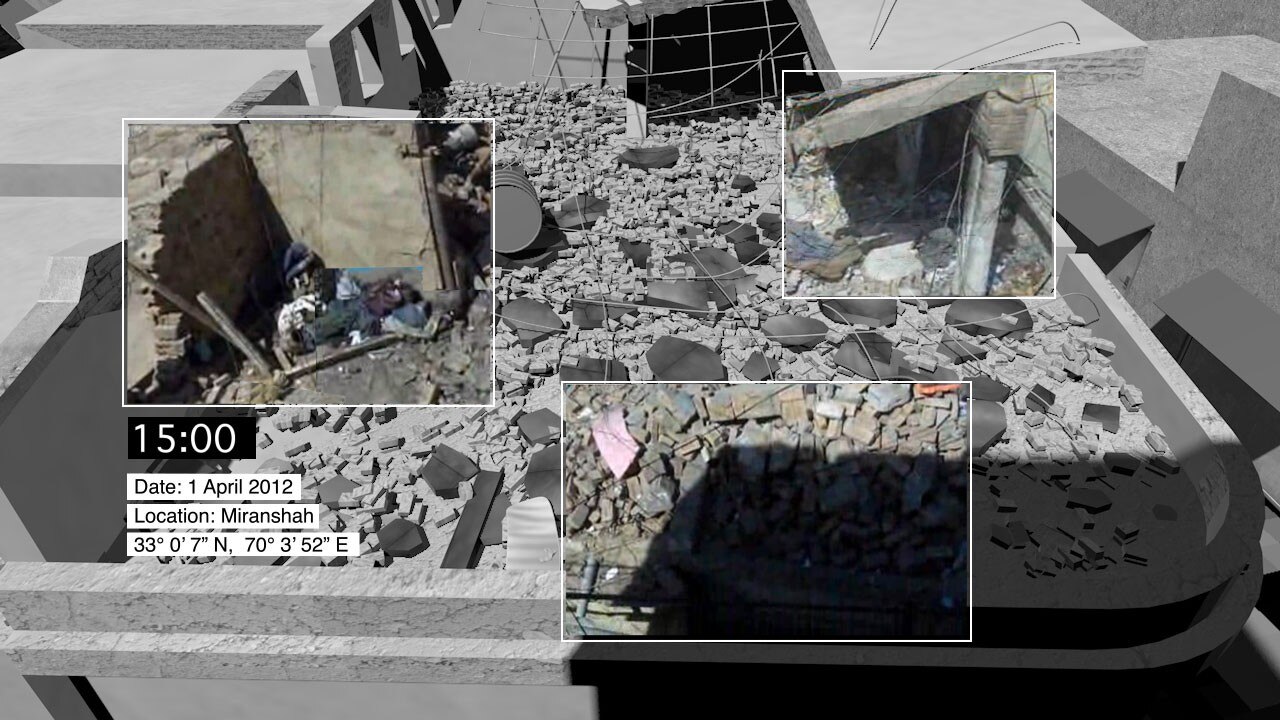An interactive map of drone strikes across seven countries and visualisations of three in Pakistan, produced by the Forensic Architecture team based at Goldsmiths, forms an integral part of the report presented by United Nations Special Rapporteur on Counter Terrorism and Human Rights.




